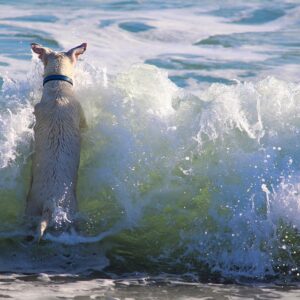Shed hunting is an increasingly popular outdoor activity that engages your dog’s natural instincts and provides them with physical and mental exercise. Not only is shed hunting a fun pastime for you and your four-legged companion, but it is also a hobby that has its roots in practicality for hunters and conservationists alike.
Shed antlers have a range of uses, from crafting furniture to making chews for your canine companion. This guide will walk you through the steps necessary to help your dog harness their innate abilities and create a new shared hobby that you can enjoy year-round.
What Is Shed Hunting?
Simply put, shed hunting is the process of finding antlers that have naturally dropped (or ‘shed’) from deer, elk, moose, and other antlered animals. Contrary to what some people might think, the activity does not involve hunting or harming animals in any way.
Why Is Shed Hunting Beneficial for Your Dog?
Shed hunting isn’t just a fun outdoor activity; it also has numerous benefits for your dog. It takes advantage of your dog’s natural abilities, providing mental and physical stimulation. It can help reduce your dog’s destructive behaviors by channeling their energy into a productive, exciting activity.
The Basics: Training Your Dog for Shed Hunting
Here are some of the basic training steps to get your dog started in the exciting art of shed hunting.
Determine Your Dog’s Interest
Some breeds have a natural inclination for hunting or tracking, like Beagles, Bloodhounds, or Labrador Retrievers. However, any breed or mix can enjoy shed hunting if they show an interest in bones or sticks. Test your dog’s interest by introducing them to an antler and see if they show curiosity or excitement.
Basic Commands
Before you begin training for shed hunting, your dog should have a solid understanding of basic commands like ‘sit,’ ‘stay,’ ‘come,’ and ‘leave it.’ These commands are crucial during training and actual hunting sessions to ensure safety and success.
Associate Antlers With Treats
To get your dog interested in antlers, begin by associating the antlers with positive experiences. You can do this by hiding antlers and then rewarding your dog with treats and praises once they find them. This way, your dog becomes familiar with the scent and feel of antlers, stimulating their hunting instincts and turning the search into a fun and rewarding game.
Gradual Training
Don’t rush the training process. Start with short training sessions in a controlled environment and gradually increase the complexity by transitioning to different terrains and larger areas as your dog becomes more proficient in finding shed antlers.
Tools and Equipment Needed for Shed Hunting
While your dog’s keen senses are the primary tool in shed hunting, there are also several pieces of equipment that can make the process easier and more successful.
Dog Harness and Leash
A durable, comfortable harness and leash are important, especially in the early stages of training when you need to guide your dog. A harness is more comfortable for your dog than a collar and offers better control.
Training Antlers
You’ll need a few shed antlers for training purposes. Start with small antlers, and gradually introduce larger ones as your dog’s confidence and skills improve.
Treats and Toys
High-value treats and favorite toys are essential for rewarding your dog when they successfully locate an antler. The more rewarding the find, the more eager they’ll be to continue hunting.
Embarking on Your First Shed Hunting Adventure
After completing the training stage, you can embark on your first real shed hunting adventure. Start in an area where you know shed antlers are likely to be found, such as a trail known for deer activity. Keep your first few hunts short to avoid overwhelming your dog and, as always, reward them for their hard work.
Conclusion
The art of shed hunting can engage your dog’s natural instincts and reward both of you with fun, physical activity, and possibly a collection of antlers. With patient, consistent training, you and your furry friend can discover the joy of this unique outdoor hobby and enjoy many shared adventures for years to come.

